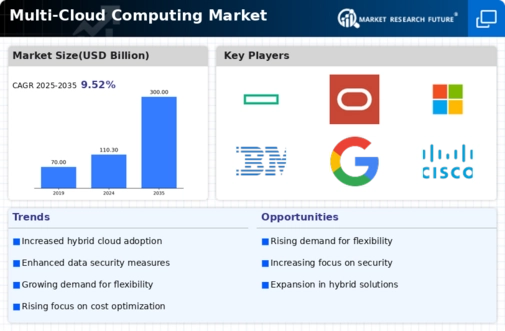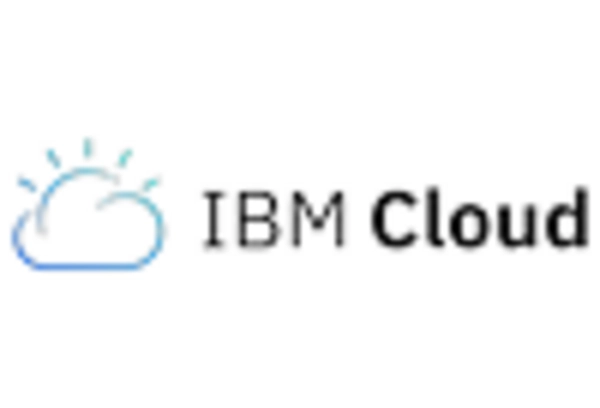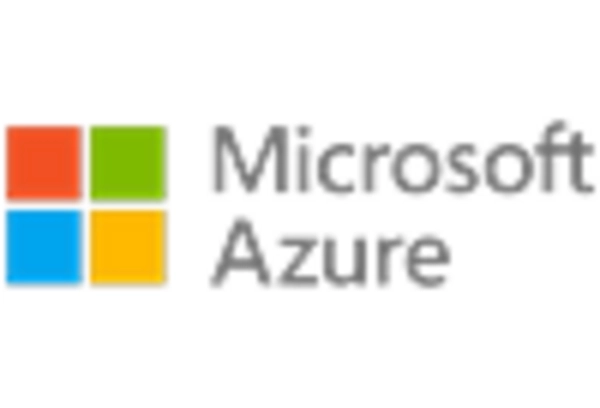-
FACTOR ANALYSIS
-
\r\n\r\n\r\nValue chain Analysis
-
\r\n\r\n\r\nPorter's
-
Five Forces Analysis
-
\r\n\r\n\r\nBargaining Power of Suppliers
-
\r\n\r\n\r\nBargaining
-
Power of Buyers
-
\r\n\r\n\r\nThreat of New Entrants
-
\r\n\r\n\r\nThreat
-
of Substitutes
-
\r\n\r\n\r\nIntensity of Rivalry
-
\r\n\r\n\r\n\r\n\r\nCOVID-19
-
Impact Analysis
-
\r\n\r\n\r\nMarket Impact Analysis
-
\r\n\r\n\r\nRegional
-
Impact
-
\r\n\r\n\r\nOpportunity and Threat Analysis
-
\r\n\r\n\r\n\r\n\r\n\r\n\r\n
-
\r\n
-
\r\n\r\n\r\nMULTI-CLOUD
-
COMPUTING MARKET, BY Service Model (USD Billion)
-
\r\n\r\n\r\nInfrastructure
-
as a Service
-
\r\n\r\n\r\nPlatform as a Service
-
\r\n\r\n\r\nSoftware
-
as a Service
-
\r\n\r\n\r\n\r\n\r\nMULTI-CLOUD COMPUTING
-
MARKET, BY Deployment Type (USD Billion)
-
\r\n\r\n\r\nPublic
-
Cloud
-
\r\n\r\n\r\nPrivate Cloud
-
\r\n\r\n\r\nHybrid
-
Cloud
-
\r\n\r\n\r\n\r\n\r\nMULTI-CLOUD COMPUTING
-
MARKET, BY Component (USD Billion)
-
\r\n\r\n\r\nCloud Services
-
\r\n\r\n\r\nCloud
-
Management Tools
-
\r\n\r\n\r\nCloud Security Solutions
-
\r\n\r\n\r\n\r\n\r\nMULTI-CLOUD
-
COMPUTING MARKET, BY End User (USD Billion)
-
\r\n\r\n\r\nSmall
-
and Medium Enterprises
-
\r\n\r\n\r\nLarge Enterprises
-
\r\n\r\n\r\nGovernment
-
\r\n\r\n\r\n\r\n\r\nMULTI-CLOUD
-
COMPUTING MARKET, BY Regional (USD Billion)
-
\r\n\r\n\r\nNorth
-
America
-
\r\n\r\n\r\nUS
-
\r\n\r\n\r\nCanada
-
\r\n\r\n\r\n\r\n\r\nEurope
-
\r\n\r\n\r\nGermany
-
\r\n\r\n\r\nUK
-
\r\n\r\n\r\nFrance
-
\r\n\r\n\r\nRussia
-
\r\n\r\n\r\nItaly
-
\r\n\r\n\r\nSpain
-
\r\n\r\n\r\nRest
-
of Europe
-
\r\n\r\n\r\n\r\n\r\nAPAC
-
\r\n\r\n\r\nChina
-
\r\n\r\n\r\nIndia
-
\r\n\r\n\r\nJapan
-
\r\n\r\n\r\nSouth
-
Korea
-
\r\n\r\n\r\nMalaysia
-
\r\n\r\n\r\nThailand
-
\r\n\r\n\r\nIndonesia
-
\r\n\r\n\r\nRest
-
of APAC
-
\r\n\r\n\r\n\r\n\r\nSouth America
-
\r\n\r\n\r\nBrazil
-
\r\n\r\n\r\nMexico
-
\r\n\r\n\r\nArgentina
-
\r\n\r\n\r\nRest
-
of South America
-
\r\n\r\n\r\n\r\n\r\nMEA
-
\r\n\r\n\r\nGCC
-
Countries
-
\r\n\r\n\r\nSouth Africa
-
\r\n\r\n\r\nRest
-
of MEA
-
\r\n\r\n\r\n\r\n\r\n\r\n\r\n
-
\r\n
-
\r\n\r\n\r\nCompetitive
-
Landscape
-
\r\n\r\n\r\nOverview
-
\r\n\r\n\r\nCompetitive
-
Analysis
-
\r\n\r\n\r\nMarket share Analysis
-
\r\n\r\n\r\nMajor
-
Growth Strategy in the MULTI-CLOUD COMPUTING MARKET
-
\r\n\r\n\r\nCompetitive
-
Benchmarking
-
\r\n\r\n\r\nLeading Players in Terms of Number of Developments
-
in the MULTI-CLOUD COMPUTING MARKET
-
\r\n\r\n\r\nKey developments
-
and growth strategies
-
\r\n\r\n\r\nNew Product Launch/Service Deployment
-
\r\n\r\n\r\nMerger
-
& Acquisitions
-
\r\n\r\n\r\nJoint Ventures
-
\r\n\r\n\r\n\r\n\r\nMajor
-
Players Financial Matrix
-
\r\n\r\n\r\nSales and Operating Income
-
\r\n\r\n\r\nMajor
-
Players R&D Expenditure. 2023
-
\r\n\r\n\r\n\r\n\r\n\r\n\r\nCompany
-
Profiles
-
\r\n\r\n\r\nAmazon
-
\r\n\r\n\r\nFinancial
-
Overview
-
\r\n\r\n\r\nProducts Offered
-
\r\n\r\n\r\nKey
-
Developments
-
\r\n\r\n\r\nSWOT Analysis
-
\r\n\r\n\r\nKey
-
Strategies
-
\r\n\r\n\r\n\r\n\r\nIBM
-
\r\n\r\n\r\nFinancial
-
Overview
-
\r\n\r\n\r\nProducts Offered
-
\r\n\r\n\r\nKey
-
Developments
-
\r\n\r\n\r\nSWOT Analysis
-
\r\n\r\n\r\nKey
-
Strategies
-
\r\n\r\n\r\n\r\n\r\nRackspace
-
\r\n\r\n\r\nFinancial
-
Overview
-
\r\n\r\n\r\nProducts Offered
-
\r\n\r\n\r\nKey
-
Developments
-
\r\n\r\n\r\nSWOT Analysis
-
\r\n\r\n\r\nKey
-
Strategies
-
\r\n\r\n\r\n\r\n\r\nSalesforce
-
\r\n\r\n\r\nFinancial
-
Overview
-
\r\n\r\n\r\nProducts Offered
-
\r\n\r\n\r\nKey
-
Developments
-
\r\n\r\n\r\nSWOT Analysis
-
\r\n\r\n\r\nKey
-
Strategies
-
\r\n\r\n\r\n\r\n\r\nGoogle
-
\r\n\r\n\r\nFinancial
-
Overview
-
\r\n\r\n\r\nProducts Offered
-
\r\n\r\n\r\nKey
-
Developments
-
\r\n\r\n\r\nSWOT Analysis
-
\r\n\r\n\r\nKey
-
Strategies
-
\r\n\r\n\r\n\r\n\r\nHuawei
-
\r\n\r\n\r\nFinancial
-
Overview
-
\r\n\r\n\r\nProducts Offered
-
\r\n\r\n\r\nKey
-
Developments
-
\r\n\r\n\r\nSWOT Analysis
-
\r\n\r\n\r\nKey
-
Strategies
-
\r\n\r\n\r\n\r\n\r\nDell
-
\r\n\r\n\r\nFinancial
-
Overview
-
\r\n\r\n\r\nProducts Offered
-
\r\n\r\n\r\nKey
-
Developments
-
\r\n\r\n\r\nSWOT Analysis
-
\r\n\r\n\r\nKey
-
Strategies
-
\r\n\r\n\r\n\r\n\r\nDigitalOcean
-
\r\n\r\n\r\nFinancial
-
Overview
-
\r\n\r\n\r\nProducts Offered
-
\r\n\r\n\r\nKey
-
Developments
-
\r\n\r\n\r\nSWOT Analysis
-
\r\n\r\n\r\nKey
-
Strategies
-
\r\n\r\n\r\n\r\n\r\nMicrosoft
-
\r\n\r\n\r\nFinancial
-
Overview
-
\r\n\r\n\r\nProducts Offered
-
\r\n\r\n\r\nKey
-
Developments
-
\r\n\r\n\r\nSWOT Analysis
-
\r\n\r\n\r\nKey
-
Strategies
-
\r\n\r\n\r\n\r\n\r\nTencent
-
\r\n\r\n\r\nFinancial
-
Overview
-
\r\n\r\n\r\nProducts Offered
-
\r\n\r\n\r\nKey
-
Developments
-
\r\n\r\n\r\nSWOT Analysis
-
\r\n\r\n\r\nKey
-
Strategies
-
\r\n\r\n\r\n\r\n\r\nRed Hat
-
\r\n\r\n\r\nFinancial
-
Overview
-
\r\n\r\n\r\nProducts Offered
-
\r\n\r\n\r\nKey
-
Developments
-
\r\n\r\n\r\nSWOT Analysis
-
\r\n\r\n\r\nKey
-
Strategies
-
\r\n\r\n\r\n\r\n\r\nVMware
-
\r\n\r\n\r\nFinancial
-
Overview
-
\r\n\r\n\r\nProducts Offered
-
\r\n\r\n\r\nKey
-
Developments
-
\r\n\r\n\r\nSWOT Analysis
-
\r\n\r\n\r\nKey
-
Strategies
-
\r\n\r\n\r\n\r\n\r\nAlibaba
-
\r\n\r\n\r\nFinancial
-
Overview
-
\r\n\r\n\r\nProducts Offered
-
\r\n\r\n\r\nKey
-
Developments
-
\r\n\r\n\r\nSWOT Analysis
-
\r\n\r\n\r\nKey
-
Strategies
-
\r\n\r\n\r\n\r\n\r\nCisco
-
\r\n\r\n\r\nFinancial
-
Overview
-
\r\n\r\n\r\nProducts Offered
-
\r\n\r\n\r\nKey
-
Developments
-
\r\n\r\n\r\nSWOT Analysis
-
\r\n\r\n\r\nKey
-
Strategies
-
\r\n\r\n\r\n\r\n\r\nOracle
-
\r\n\r\n\r\nFinancial
-
Overview
-
\r\n\r\n\r\nProducts Offered
-
\r\n\r\n\r\nKey
-
Developments
-
\r\n\r\n\r\nSWOT Analysis
-
\r\n\r\n\r\nKey
-
Strategies
-
\r\n\r\n\r\n\r\n\r\n\r\n\r\nAppendix
-
\r\n\r\n\r\nReferences
-
\r\n\r\n\r\nRelated
-
Reports
-
\r\n\r\n\r\n\r\n\r\nLIST Of tables
-
\r\n
-
\r\n\r\n\r\nLIST
-
OF ASSUMPTIONS
-
\r\n\r\n\r\nNorth America Market SIZE ESTIMATES &
-
FORECAST, BY SERVICE MODEL, 2019-2035 (USD Billions)
-
\r\n\r\n\r\nNorth
-
America Market SIZE ESTIMATES & FORECAST, BY DEPLOYMENT TYPE, 2019-2035 (USD
-
Billions)
-
\r\n\r\n\r\nNorth America Market SIZE ESTIMATES & FORECAST,
-
BY COMPONENT, 2019-2035 (USD Billions)
-
\r\n\r\n\r\nNorth America
-
Market SIZE ESTIMATES & FORECAST, BY END USER, 2019-2035 (USD Billions)
-
\r\n\r\n\r\nNorth
-
America Market SIZE ESTIMATES & FORECAST, BY REGIONAL, 2019-2035 (USD Billions)
-
\r\n\r\n\r\nUS
-
Market SIZE ESTIMATES & FORECAST, BY SERVICE MODEL, 2019-2035 (USD Billions)
-
\r\n\r\n\r\nUS
-
Market SIZE ESTIMATES & FORECAST, BY DEPLOYMENT TYPE, 2019-2035 (USD Billions)
-
\r\n\r\n\r\nUS
-
Market SIZE ESTIMATES & FORECAST, BY COMPONENT, 2019-2035 (USD Billions)
-
\r\n\r\n\r\nUS
-
Market SIZE ESTIMATES & FORECAST, BY END USER, 2019-2035 (USD Billions)
-
\r\n\r\n\r\nUS
-
Market SIZE ESTIMATES & FORECAST, BY REGIONAL, 2019-2035 (USD Billions)
-
\r\n\r\n\r\nCanada
-
Market SIZE ESTIMATES & FORECAST, BY SERVICE MODEL, 2019-2035 (USD Billions)
-
\r\n\r\n\r\nCanada
-
Market SIZE ESTIMATES & FORECAST, BY DEPLOYMENT TYPE, 2019-2035 (USD Billions)
-
\r\n\r\n\r\nCanada
-
Market SIZE ESTIMATES & FORECAST, BY COMPONENT, 2019-2035 (USD Billions)
-
\r\n\r\n\r\nCanada
-
Market SIZE ESTIMATES & FORECAST, BY END USER, 2019-2035 (USD Billions)
-
\r\n\r\n\r\nCanada
-
Market SIZE ESTIMATES & FORECAST, BY REGIONAL, 2019-2035 (USD Billions)
-
\r\n\r\n\r\nEurope
-
Market SIZE ESTIMATES & FORECAST, BY SERVICE MODEL, 2019-2035 (USD Billions)
-
\r\n\r\n\r\nEurope
-
Market SIZE ESTIMATES & FORECAST, BY DEPLOYMENT TYPE, 2019-2035 (USD Billions)
-
\r\n\r\n\r\nEurope
-
Market SIZE ESTIMATES & FORECAST, BY COMPONENT, 2019-2035 (USD Billions)
-
\r\n\r\n\r\nEurope
-
Market SIZE ESTIMATES & FORECAST, BY END USER, 2019-2035 (USD Billions)
-
\r\n\r\n\r\nEurope
-
Market SIZE ESTIMATES & FORECAST, BY REGIONAL, 2019-2035 (USD Billions)
-
\r\n\r\n\r\nGermany
-
Market SIZE ESTIMATES & FORECAST, BY SERVICE MODEL, 2019-2035 (USD Billions)
-
\r\n\r\n\r\nGermany
-
Market SIZE ESTIMATES & FORECAST, BY DEPLOYMENT TYPE, 2019-2035 (USD Billions)
-
\r\n\r\n\r\nGermany
-
Market SIZE ESTIMATES & FORECAST, BY COMPONENT, 2019-2035 (USD Billions)
-
\r\n\r\n\r\nGermany
-
Market SIZE ESTIMATES & FORECAST, BY END USER, 2019-2035 (USD Billions)
-
\r\n\r\n\r\nGermany
-
Market SIZE ESTIMATES & FORECAST, BY REGIONAL, 2019-2035 (USD Billions)
-
\r\n\r\n\r\nUK
-
Market SIZE ESTIMATES & FORECAST, BY SERVICE MODEL, 2019-2035 (USD Billions)
-
\r\n\r\n\r\nUK
-
Market SIZE ESTIMATES & FORECAST, BY DEPLOYMENT TYPE, 2019-2035 (USD Billions)
-
\r\n\r\n\r\nUK
-
Market SIZE ESTIMATES & FORECAST, BY COMPONENT, 2019-2035 (USD Billions)
-
\r\n\r\n\r\nUK
-
Market SIZE ESTIMATES & FORECAST, BY END USER, 2019-2035 (USD Billions)
-
\r\n\r\n\r\nUK
-
Market SIZE ESTIMATES & FORECAST, BY REGIONAL, 2019-2035 (USD Billions)
-
\r\n\r\n\r\nFrance
-
Market SIZE ESTIMATES & FORECAST, BY SERVICE MODEL, 2019-2035 (USD Billions)
-
\r\n\r\n\r\nFrance
-
Market SIZE ESTIMATES & FORECAST, BY DEPLOYMENT TYPE, 2019-2035 (USD Billions)
-
\r\n\r\n\r\nFrance
-
Market SIZE ESTIMATES & FORECAST, BY COMPONENT, 2019-2035 (USD Billions)
-
\r\n\r\n\r\nFrance
-
Market SIZE ESTIMATES & FORECAST, BY END USER, 2019-2035 (USD Billions)
-
\r\n\r\n\r\nFrance
-
Market SIZE ESTIMATES & FORECAST, BY REGIONAL, 2019-2035 (USD Billions)
-
\r\n\r\n\r\nRussia
-
Market SIZE ESTIMATES & FORECAST, BY SERVICE MODEL, 2019-2035 (USD Billions)
-
\r\n\r\n\r\nRussia
-
Market SIZE ESTIMATES & FORECAST, BY DEPLOYMENT TYPE, 2019-2035 (USD Billions)
-
\r\n\r\n\r\nRussia
-
Market SIZE ESTIMATES & FORECAST, BY COMPONENT, 2019-2035 (USD Billions)
-
\r\n\r\n\r\nRussia
-
Market SIZE ESTIMATES & FORECAST, BY END USER, 2019-2035 (USD Billions)
-
\r\n\r\n\r\nRussia
-
Market SIZE ESTIMATES & FORECAST, BY REGIONAL, 2019-2035 (USD Billions)
-
\r\n\r\n\r\nItaly
-
Market SIZE ESTIMATES & FORECAST, BY SERVICE MODEL, 2019-2035 (USD Billions)
-
\r\n\r\n\r\nItaly
-
Market SIZE ESTIMATES & FORECAST, BY DEPLOYMENT TYPE, 2019-2035 (USD Billions)
-
\r\n\r\n\r\nItaly
-
Market SIZE ESTIMATES & FORECAST, BY COMPONENT, 2019-2035 (USD Billions)
-
\r\n\r\n\r\nItaly
-
Market SIZE ESTIMATES & FORECAST, BY END USER, 2019-2035 (USD Billions)
-
\r\n\r\n\r\nItaly
-
Market SIZE ESTIMATES & FORECAST, BY REGIONAL, 2019-2035 (USD Billions)
-
\r\n\r\n\r\nSpain
-
Market SIZE ESTIMATES & FORECAST, BY SERVICE MODEL, 2019-2035 (USD Billions)
-
\r\n\r\n\r\nSpain
-
Market SIZE ESTIMATES & FORECAST, BY DEPLOYMENT TYPE, 2019-2035 (USD Billions)
-
\r\n\r\n\r\nSpain
-
Market SIZE ESTIMATES & FORECAST, BY COMPONENT, 2019-2035 (USD Billions)
-
\r\n\r\n\r\nSpain
-
Market SIZE ESTIMATES & FORECAST, BY END USER, 2019-2035 (USD Billions)
-
\r\n\r\n\r\nSpain
-
Market SIZE ESTIMATES & FORECAST, BY REGIONAL, 2019-2035 (USD Billions)
-
\r\n\r\n\r\nRest
-
of Europe Market SIZE ESTIMATES & FORECAST, BY SERVICE MODEL, 2019-2035 (USD
-
Billions)
-
\r\n\r\n\r\nRest of Europe Market SIZE ESTIMATES &
-
FORECAST, BY DEPLOYMENT TYPE, 2019-2035 (USD Billions)
-
\r\n\r\n\r\nRest
-
of Europe Market SIZE ESTIMATES & FORECAST, BY COMPONENT, 2019-2035 (USD Billions)
-
\r\n\r\n\r\nRest
-
of Europe Market SIZE ESTIMATES & FORECAST, BY END USER, 2019-2035 (USD Billions)
-
\r\n\r\n\r\nRest
-
of Europe Market SIZE ESTIMATES & FORECAST, BY REGIONAL, 2019-2035 (USD Billions)
-
\r\n\r\n\r\nAPAC
-
Market SIZE ESTIMATES & FORECAST, BY SERVICE MODEL, 2019-2035 (USD Billions)
-
\r\n\r\n\r\nAPAC
-
Market SIZE ESTIMATES & FORECAST, BY DEPLOYMENT TYPE, 2019-2035 (USD Billions)
-
\r\n\r\n\r\nAPAC
-
Market SIZE ESTIMATES & FORECAST, BY COMPONENT, 2019-2035 (USD Billions)
-
\r\n\r\n\r\nAPAC
-
Market SIZE ESTIMATES & FORECAST, BY END USER, 2019-2035 (USD Billions)
-
\r\n\r\n\r\nAPAC
-
Market SIZE ESTIMATES & FORECAST, BY REGIONAL, 2019-2035 (USD Billions)
-
\r\n\r\n\r\nChina
-
Market SIZE ESTIMATES & FORECAST, BY SERVICE MODEL, 2019-2035 (USD Billions)
-
\r\n\r\n\r\nChina
-
Market SIZE ESTIMATES & FORECAST, BY DEPLOYMENT TYPE, 2019-2035 (USD Billions)
-
\r\n\r\n\r\nChina
-
Market SIZE ESTIMATES & FORECAST, BY COMPONENT, 2019-2035 (USD Billions)
-
\r\n\r\n\r\nChina
-
Market SIZE ESTIMATES & FORECAST, BY END USER, 2019-2035 (USD Billions)
-
\r\n\r\n\r\nChina
-
Market SIZE ESTIMATES & FORECAST, BY REGIONAL, 2019-2035 (USD Billions)
-
\r\n\r\n\r\nIndia
-
Market SIZE ESTIMATES & FORECAST, BY SERVICE MODEL, 2019-2035 (USD Billions)
-
\r\n\r\n\r\nIndia
-
Market SIZE ESTIMATES & FORECAST, BY DEPLOYMENT TYPE, 2019-2035 (USD Billions)
-
\r\n\r\n\r\nIndia
-
Market SIZE ESTIMATES & FORECAST, BY COMPONENT, 2019-2035 (USD Billions)
-
\r\n\r\n\r\nIndia
-
Market SIZE ESTIMATES & FORECAST, BY END USER, 2019-2035 (USD Billions)
-
\r\n\r\n\r\nIndia
-
Market SIZE ESTIMATES & FORECAST, BY REGIONAL, 2019-2035 (USD Billions)
-
\r\n\r\n\r\nJapan
-
Market SIZE ESTIMATES & FORECAST, BY SERVICE MODEL, 2019-2035 (USD Billions)
-
\r\n\r\n\r\nJapan
-
Market SIZE ESTIMATES & FORECAST, BY DEPLOYMENT TYPE, 2019-2035 (USD Billions)
-
\r\n\r\n\r\nJapan
-
Market SIZE ESTIMATES & FORECAST, BY COMPONENT, 2019-2035 (USD Billions)
-
\r\n\r\n\r\nJapan
-
Market SIZE ESTIMATES & FORECAST, BY END USER, 2019-2035 (USD Billions)
-
\r\n\r\n\r\nJapan
-
Market SIZE ESTIMATES & FORECAST, BY REGIONAL, 2019-2035 (USD Billions)
-
\r\n\r\n\r\nSouth
-
Korea Market SIZE ESTIMATES & FORECAST, BY SERVICE MODEL, 2019-2035 (USD Billions)
-
\r\n\r\n\r\nSouth
-
Korea Market SIZE ESTIMATES & FORECAST, BY DEPLOYMENT TYPE, 2019-2035 (USD Billions)
-
\r\n\r\n\r\nSouth
-
Korea Market SIZE ESTIMATES & FORECAST, BY COMPONENT, 2019-2035 (USD Billions)
-
\r\n\r\n\r\nSouth
-
Korea Market SIZE ESTIMATES & FORECAST, BY END USER, 2019-2035 (USD Billions)
-
\r\n\r\n\r\nSouth
-
Korea Market SIZE ESTIMATES & FORECAST, BY REGIONAL, 2019-2035 (USD Billions)
-
\r\n\r\n\r\nMalaysia
-
Market SIZE ESTIMATES & FORECAST, BY SERVICE MODEL, 2019-2035 (USD Billions)
-
\r\n\r\n\r\nMalaysia
-
Market SIZE ESTIMATES & FORECAST, BY DEPLOYMENT TYPE, 2019-2035 (USD Billions)
-
\r\n\r\n\r\nMalaysia
-
Market SIZE ESTIMATES & FORECAST, BY COMPONENT, 2019-2035 (USD Billions)
-
\r\n\r\n\r\nMalaysia
-
Market SIZE ESTIMATES & FORECAST, BY END USER, 2019-2035 (USD Billions)
-
\r\n\r\n\r\nMalaysia
-
Market SIZE ESTIMATES & FORECAST, BY REGIONAL, 2019-2035 (USD Billions)
-
\r\n\r\n\r\nThailand
-
Market SIZE ESTIMATES & FORECAST, BY SERVICE MODEL, 2019-2035 (USD Billions)
-
\r\n\r\n\r\nThailand
-
Market SIZE ESTIMATES & FORECAST, BY DEPLOYMENT TYPE, 2019-2035 (USD Billions)
-
\r\n\r\n\r\nThailand
-
Market SIZE ESTIMATES & FORECAST, BY COMPONENT, 2019-2035 (USD Billions)
-
\r\n\r\n\r\nThailand
-
Market SIZE ESTIMATES & FORECAST, BY END USER, 2019-2035 (USD Billions)
-
\r\n\r\n\r\nThailand
-
Market SIZE ESTIMATES & FORECAST, BY REGIONAL, 2019-2035 (USD Billions)
-
\r\n\r\n\r\nIndonesia
-
Market SIZE ESTIMATES & FORECAST, BY SERVICE MODEL, 2019-2035 (USD Billions)
-
\r\n\r\n\r\nIndonesia
-
Market SIZE ESTIMATES & FORECAST, BY DEPLOYMENT TYPE, 2019-2035 (USD Billions)
-
\r\n\r\n\r\nIndonesia
-
Market SIZE ESTIMATES & FORECAST, BY COMPONENT, 2019-2035 (USD Billions)
-
\r\n\r\n\r\nIndonesia
-
Market SIZE ESTIMATES & FORECAST, BY END USER, 2019-2035 (USD Billions)
-
\r\n\r\n\r\nIndonesia
-
Market SIZE ESTIMATES & FORECAST, BY REGIONAL, 2019-2035 (USD Billions)
-
\r\n\r\n\r\nRest
-
of APAC Market SIZE ESTIMATES & FORECAST, BY SERVICE MODEL, 2019-2035 (USD Billions)
-
\r\n\r\n\r\nRest
-
of APAC Market SIZE ESTIMATES & FORECAST, BY DEPLOYMENT TYPE, 2019-2035 (USD
-
Billions)
-
\r\n\r\n\r\nRest of APAC Market SIZE ESTIMATES & FORECAST,
-
BY COMPONENT, 2019-2035 (USD Billions)
-
\r\n\r\n\r\nRest of APAC Market
-
SIZE ESTIMATES & FORECAST, BY END USER, 2019-2035 (USD Billions)
-
\r\n\r\n\r\nRest
-
of APAC Market SIZE ESTIMATES & FORECAST, BY REGIONAL, 2019-2035 (USD Billions)
-
\r\n\r\n\r\nSouth
-
America Market SIZE ESTIMATES & FORECAST, BY SERVICE MODEL, 2019-2035 (USD Billions)
-
\r\n\r\n\r\nSouth
-
America Market SIZE ESTIMATES & FORECAST, BY DEPLOYMENT TYPE, 2019-2035 (USD
-
Billions)
-
\r\n\r\n\r\nSouth America Market SIZE ESTIMATES & FORECAST,
-
BY COMPONENT, 2019-2035 (USD Billions)
-
\r\n\r\n\r\nSouth America
-
Market SIZE ESTIMATES & FORECAST, BY END USER, 2019-2035 (USD Billions)
-
\r\n\r\n\r\nSouth
-
America Market SIZE ESTIMATES & FORECAST, BY REGIONAL, 2019-2035 (USD Billions)
-
\r\n\r\n\r\nBrazil
-
Market SIZE ESTIMATES & FORECAST, BY SERVICE MODEL, 2019-2035 (USD Billions)
-
\r\n\r\n\r\nBrazil
-
Market SIZE ESTIMATES & FORECAST, BY DEPLOYMENT TYPE, 2019-2035 (USD Billions)
-
\r\n\r\n\r\nBrazil
-
Market SIZE ESTIMATES & FORECAST, BY COMPONENT, 2019-2035 (USD Billions)
-
\r\n\r\n\r\nBrazil
-
Market SIZE ESTIMATES & FORECAST, BY END USER, 2019-2035 (USD Billions)
-
\r\n\r\n\r\nBrazil
-
Market SIZE ESTIMATES & FORECAST, BY REGIONAL, 2019-2035 (USD Billions)
-
\r\n\r\n\r\nMexico
-
Market SIZE ESTIMATES & FORECAST, BY SERVICE MODEL, 2019-2035 (USD Billions)
-
\r\n\r\n\r\nMexico
-
Market SIZE ESTIMATES & FORECAST, BY DEPLOYMENT TYPE, 2019-2035 (USD Billions)
-
\r\n\r\n\r\nMexico
-
Market SIZE ESTIMATES & FORECAST, BY COMPONENT, 2019-2035 (USD Billions)
-
\r\n\r\n\r\nMexico
-
Market SIZE ESTIMATES & FORECAST, BY END USER, 2019-2035 (USD Billions)
-
\r\n\r\n\r\nMexico
-
Market SIZE ESTIMATES & FORECAST, BY REGIONAL, 2019-2035 (USD Billions)
-
\r\n\r\n\r\nArgentina
-
Market SIZE ESTIMATES & FORECAST, BY SERVICE MODEL, 2019-2035 (USD Billions)
-
\r\n\r\n\r\nArgentina
-
Market SIZE ESTIMATES & FORECAST, BY DEPLOYMENT TYPE, 2019-2035 (USD Billions)
-
\r\n\r\n\r\nArgentina
-
Market SIZE ESTIMATES & FORECAST, BY COMPONENT, 2019-2035 (USD Billions)
-
\r\n\r\n\r\nArgentina
-
Market SIZE ESTIMATES & FORECAST, BY END USER, 2019-2035 (USD Billions)
-
\r\n\r\n\r\nArgentina
-
Market SIZE ESTIMATES & FORECAST, BY REGIONAL, 2019-2035 (USD Billions)
-
\r\n\r\n\r\nRest
-
of South America Market SIZE ESTIMATES & FORECAST, BY SERVICE MODEL, 2019-2035
-
(USD Billions)
-
\r\n\r\n\r\nRest of South America Market SIZE ESTIMATES
-
& FORECAST, BY DEPLOYMENT TYPE, 2019-2035 (USD Billions)
-
\r\n\r\n\r\nRest
-
of South America Market SIZE ESTIMATES & FORECAST, BY COMPONENT, 2019-2035 (USD
-
Billions)
-
\r\n\r\n\r\nRest of South America Market SIZE ESTIMATES
-
& FORECAST, BY END USER, 2019-2035 (USD Billions)
-
\r\n\r\n\r\nRest
-
of South America Market SIZE ESTIMATES & FORECAST, BY REGIONAL, 2019-2035 (USD
-
Billions)
-
\r\n\r\n\r\nMEA Market SIZE ESTIMATES & FORECAST, BY
-
SERVICE MODEL, 2019-2035 (USD Billions)
-
\r\n\r\n\r\nMEA Market SIZE
-
ESTIMATES & FORECAST, BY DEPLOYMENT TYPE, 2019-2035 (USD Billions)
-
\r\n\r\n\r\nMEA
-
Market SIZE ESTIMATES & FORECAST, BY COMPONENT, 2019-2035 (USD Billions)
-
\r\n\r\n\r\nMEA
-
Market SIZE ESTIMATES & FORECAST, BY END USER, 2019-2035 (USD Billions)
-
\r\n\r\n\r\nMEA
-
Market SIZE ESTIMATES & FORECAST, BY REGIONAL, 2019-2035 (USD Billions)
-
\r\n\r\n\r\nGCC
-
Countries Market SIZE ESTIMATES & FORECAST, BY SERVICE MODEL, 2019-2035 (USD
-
Billions)
-
\r\n\r\n\r\nGCC Countries Market SIZE ESTIMATES & FORECAST,
-
BY DEPLOYMENT TYPE, 2019-2035 (USD Billions)
-
\r\n\r\n\r\nGCC Countries
-
Market SIZE ESTIMATES & FORECAST, BY COMPONENT, 2019-2035 (USD Billions)
-
\r\n\r\n\r\nGCC
-
Countries Market SIZE ESTIMATES & FORECAST, BY END USER, 2019-2035 (USD Billions)
-
\r\n\r\n\r\nGCC
-
Countries Market SIZE ESTIMATES & FORECAST, BY REGIONAL, 2019-2035 (USD Billions)
-
\r\n\r\n\r\nSouth
-
Africa Market SIZE ESTIMATES & FORECAST, BY SERVICE MODEL, 2019-2035 (USD Billions)
-
\r\n\r\n\r\nSouth
-
Africa Market SIZE ESTIMATES & FORECAST, BY DEPLOYMENT TYPE, 2019-2035 (USD
-
Billions)
-
\r\n\r\n\r\nSouth Africa Market SIZE ESTIMATES & FORECAST,
-
BY COMPONENT, 2019-2035 (USD Billions)
-
\r\n\r\n\r\nSouth Africa Market
-
SIZE ESTIMATES & FORECAST, BY END USER, 2019-2035 (USD Billions)
-
\r\n\r\n\r\nSouth
-
Africa Market SIZE ESTIMATES & FORECAST, BY REGIONAL, 2019-2035 (USD Billions)
-
\r\n\r\n\r\nRest
-
of MEA Market SIZE ESTIMATES & FORECAST, BY SERVICE MODEL, 2019-2035 (USD Billions)
-
\r\n\r\n\r\nRest
-
of MEA Market SIZE ESTIMATES & FORECAST, BY DEPLOYMENT TYPE, 2019-2035 (USD
-
Billions)
-
\r\n\r\n\r\nRest of MEA Market SIZE ESTIMATES & FORECAST,
-
BY COMPONENT, 2019-2035 (USD Billions)
-
\r\n\r\n\r\nRest of MEA Market
-
SIZE ESTIMATES & FORECAST, BY END USER, 2019-2035 (USD Billions)
-
\r\n\r\n\r\nRest
-
of MEA Market SIZE ESTIMATES & FORECAST, BY REGIONAL, 2019-2035 (USD Billions)
-
\r\n\r\n\r\nPRODUCT
-
LAUNCH/PRODUCT DEVELOPMENT/APPROVAL
-
\r\n\r\n\r\nACQUISITION/PARTNERSHIP
-
\r\n\r\n\r\n
-
\r\n
-
\r\n
-
\r\n
-
\r\n
-
\r\n
-
\r\n
-
\r\n
-
\r\n
-
\r\n
-
\r\n
-
\r\n
-
\r\n
-
\r\n
-
\r\n
-
\r\n
-
\r\n
-
\r\n
-
\r\n
-
\r\n
-
\r\n
-
\r\n
-
\r\n
-
\r\n
-
\r\n
-
\r\n
-
\r\n
-
\r\n
-
\r\n
-
\r\nLIST
-
Of figures
-
\r\n
-
\r\n\r\n\r\nMARKET SYNOPSIS
-
\r\n\r\n\r\nNORTH
-
AMERICA MARKET ANALYSIS
-
\r\n\r\n\r\nUS MARKET ANALYSIS BY SERVICE
-
MODEL
-
\r\n\r\n\r\nUS MARKET ANALYSIS BY DEPLOYMENT TYPE
-
\r\n\r\n\r\nUS
-
MARKET ANALYSIS BY COMPONENT
-
\r\n\r\n\r\nUS MARKET ANALYSIS BY END
-
USER
-
\r\n\r\n\r\nUS MARKET ANALYSIS BY REGIONAL
-
\r\n\r\n\r\nCANADA
-
MARKET ANALYSIS BY SERVICE MODEL
-
\r\n\r\n\r\nCANADA MARKET ANALYSIS
-
BY DEPLOYMENT TYPE
-
\r\n\r\n\r\nCANADA MARKET ANALYSIS BY COMPONENT
-
\r\n\r\n\r\nCANADA
-
MARKET ANALYSIS BY END USER
-
\r\n\r\n\r\nCANADA MARKET ANALYSIS BY
-
REGIONAL
-
\r\n\r\n\r\nEUROPE MARKET ANALYSIS
-
\r\n\r\n\r\nGERMANY
-
MARKET ANALYSIS BY SERVICE MODEL
-
\r\n\r\n\r\nGERMANY MARKET ANALYSIS
-
BY DEPLOYMENT TYPE
-
\r\n\r\n\r\nGERMANY MARKET ANALYSIS BY COMPONENT
-
\r\n\r\n\r\nGERMANY
-
MARKET ANALYSIS BY END USER
-
\r\n\r\n\r\nGERMANY MARKET ANALYSIS BY
-
REGIONAL
-
\r\n\r\n\r\nUK MARKET ANALYSIS BY SERVICE MODEL
-
\r\n\r\n\r\nUK
-
MARKET ANALYSIS BY DEPLOYMENT TYPE
-
\r\n\r\n\r\nUK MARKET ANALYSIS
-
BY COMPONENT
-
\r\n\r\n\r\nUK MARKET ANALYSIS BY END USER
-
\r\n\r\n\r\nUK
-
MARKET ANALYSIS BY REGIONAL
-
\r\n\r\n\r\nFRANCE MARKET ANALYSIS BY
-
SERVICE MODEL
-
\r\n\r\n\r\nFRANCE MARKET ANALYSIS BY DEPLOYMENT TYPE
-
\r\n\r\n\r\nFRANCE
-
MARKET ANALYSIS BY COMPONENT
-
\r\n\r\n\r\nFRANCE MARKET ANALYSIS BY
-
END USER
-
\r\n\r\n\r\nFRANCE MARKET ANALYSIS BY REGIONAL
-
\r\n\r\n\r\nRUSSIA
-
MARKET ANALYSIS BY SERVICE MODEL
-
\r\n\r\n\r\nRUSSIA MARKET ANALYSIS
-
BY DEPLOYMENT TYPE
-
\r\n\r\n\r\nRUSSIA MARKET ANALYSIS BY COMPONENT
-
\r\n\r\n\r\nRUSSIA
-
MARKET ANALYSIS BY END USER
-
\r\n\r\n\r\nRUSSIA MARKET ANALYSIS BY
-
REGIONAL
-
\r\n\r\n\r\nITALY MARKET ANALYSIS BY SERVICE MODEL
-
\r\n\r\n\r\nITALY
-
MARKET ANALYSIS BY DEPLOYMENT TYPE
-
\r\n\r\n\r\nITALY MARKET ANALYSIS
-
BY COMPONENT
-
\r\n\r\n\r\nITALY MARKET ANALYSIS BY END USER
-
\r\n\r\n\r\nITALY
-
MARKET ANALYSIS BY REGIONAL
-
\r\n\r\n\r\nSPAIN MARKET ANALYSIS BY
-
SERVICE MODEL
-
\r\n\r\n\r\nSPAIN MARKET ANALYSIS BY DEPLOYMENT TYPE
-
\r\n\r\n\r\nSPAIN
-
MARKET ANALYSIS BY COMPONENT
-
\r\n\r\n\r\nSPAIN MARKET ANALYSIS BY
-
END USER
-
\r\n\r\n\r\nSPAIN MARKET ANALYSIS BY REGIONAL
-
\r\n\r\n\r\nREST
-
OF EUROPE MARKET ANALYSIS BY SERVICE MODEL
-
\r\n\r\n\r\nREST OF EUROPE
-
MARKET ANALYSIS BY DEPLOYMENT TYPE
-
\r\n\r\n\r\nREST OF EUROPE MARKET
-
ANALYSIS BY COMPONENT
-
\r\n\r\n\r\nREST OF EUROPE MARKET ANALYSIS
-
BY END USER
-
\r\n\r\n\r\nREST OF EUROPE MARKET ANALYSIS BY REGIONAL
-
\r\n\r\n\r\nAPAC
-
MARKET ANALYSIS
-
\r\n\r\n\r\nCHINA MARKET ANALYSIS BY SERVICE MODEL
-
\r\n\r\n\r\nCHINA
-
MARKET ANALYSIS BY DEPLOYMENT TYPE
-
\r\n\r\n\r\nCHINA MARKET ANALYSIS
-
BY COMPONENT
-
\r\n\r\n\r\nCHINA MARKET ANALYSIS BY END USER
-
\r\n\r\n\r\nCHINA
-
MARKET ANALYSIS BY REGIONAL
-
\r\n\r\n\r\nINDIA MARKET ANALYSIS BY
-
SERVICE MODEL
-
\r\n\r\n\r\nINDIA MARKET ANALYSIS BY DEPLOYMENT TYPE
-
\r\n\r\n\r\nINDIA
-
MARKET ANALYSIS BY COMPONENT
-
\r\n\r\n\r\nINDIA MARKET ANALYSIS BY
-
END USER
-
\r\n\r\n\r\nINDIA MARKET ANALYSIS BY REGIONAL
-
\r\n\r\n\r\nJAPAN
-
MARKET ANALYSIS BY SERVICE MODEL
-
\r\n\r\n\r\nJAPAN MARKET ANALYSIS
-
BY DEPLOYMENT TYPE
-
\r\n\r\n\r\nJAPAN MARKET ANALYSIS BY COMPONENT
-
\r\n\r\n\r\nJAPAN
-
MARKET ANALYSIS BY END USER
-
\r\n\r\n\r\nJAPAN MARKET ANALYSIS BY
-
REGIONAL
-
\r\n\r\n\r\nSOUTH KOREA MARKET ANALYSIS BY SERVICE MODEL
-
\r\n\r\n\r\nSOUTH
-
KOREA MARKET ANALYSIS BY DEPLOYMENT TYPE
-
\r\n\r\n\r\nSOUTH KOREA
-
MARKET ANALYSIS BY COMPONENT
-
\r\n\r\n\r\nSOUTH KOREA MARKET ANALYSIS
-
BY END USER
-
\r\n\r\n\r\nSOUTH KOREA MARKET ANALYSIS BY REGIONAL
-
\r\n\r\n\r\nMALAYSIA
-
MARKET ANALYSIS BY SERVICE MODEL
-
\r\n\r\n\r\nMALAYSIA MARKET ANALYSIS
-
BY DEPLOYMENT TYPE
-
\r\n\r\n\r\nMALAYSIA MARKET ANALYSIS BY COMPONENT
-
\r\n\r\n\r\nMALAYSIA
-
MARKET ANALYSIS BY END USER
-
\r\n\r\n\r\nMALAYSIA MARKET ANALYSIS
-
BY REGIONAL
-
\r\n\r\n\r\nTHAILAND MARKET ANALYSIS BY SERVICE MODEL
-
\r\n\r\n\r\nTHAILAND
-
MARKET ANALYSIS BY DEPLOYMENT TYPE
-
\r\n\r\n\r\nTHAILAND MARKET ANALYSIS
-
BY COMPONENT
-
\r\n\r\n\r\nTHAILAND MARKET ANALYSIS BY END USER
-
\r\n\r\n\r\nTHAILAND
-
MARKET ANALYSIS BY REGIONAL
-
\r\n\r\n\r\nINDONESIA MARKET ANALYSIS
-
BY SERVICE MODEL
-
\r\n\r\n\r\nINDONESIA MARKET ANALYSIS BY DEPLOYMENT
-
TYPE
-
\r\n\r\n\r\nINDONESIA MARKET ANALYSIS BY COMPONENT
-
\r\n\r\n\r\nINDONESIA
-
MARKET ANALYSIS BY END USER
-
\r\n\r\n\r\nINDONESIA MARKET ANALYSIS
-
BY REGIONAL
-
\r\n\r\n\r\nREST OF APAC MARKET ANALYSIS BY SERVICE MODEL
-
\r\n\r\n\r\nREST
-
OF APAC MARKET ANALYSIS BY DEPLOYMENT TYPE
-
\r\n\r\n\r\nREST OF APAC
-
MARKET ANALYSIS BY COMPONENT
-
\r\n\r\n\r\nREST OF APAC MARKET ANALYSIS
-
BY END USER
-
\r\n\r\n\r\nREST OF APAC MARKET ANALYSIS BY REGIONAL
-
\r\n\r\n\r\nSOUTH
-
AMERICA MARKET ANALYSIS
-
\r\n\r\n\r\nBRAZIL MARKET ANALYSIS BY SERVICE
-
MODEL
-
\r\n\r\n\r\nBRAZIL MARKET ANALYSIS BY DEPLOYMENT TYPE
-
\r\n\r\n\r\nBRAZIL
-
MARKET ANALYSIS BY COMPONENT
-
\r\n\r\n\r\nBRAZIL MARKET ANALYSIS BY
-
END USER
-
\r\n\r\n\r\nBRAZIL MARKET ANALYSIS BY REGIONAL
-
\r\n\r\n\r\nMEXICO
-
MARKET ANALYSIS BY SERVICE MODEL
-
\r\n\r\n\r\nMEXICO MARKET ANALYSIS
-
BY DEPLOYMENT TYPE
-
\r\n\r\n\r\nMEXICO MARKET ANALYSIS BY COMPONENT
-
\r\n\r\n\r\nMEXICO
-
MARKET ANALYSIS BY END USER
-
\r\n\r\n\r\nMEXICO MARKET ANALYSIS BY
-
REGIONAL
-
\r\n\r\n\r\nARGENTINA MARKET ANALYSIS BY SERVICE MODEL
-
\r\n\r\n\r\nARGENTINA
-
MARKET ANALYSIS BY DEPLOYMENT TYPE
-
\r\n\r\n\r\nARGENTINA MARKET ANALYSIS
-
BY COMPONENT
-
\r\n\r\n\r\nARGENTINA MARKET ANALYSIS BY END USER
-
\r\n\r\n\r\nARGENTINA
-
MARKET ANALYSIS BY REGIONAL
-
\r\n\r\n\r\nREST OF SOUTH AMERICA MARKET
-
ANALYSIS BY SERVICE MODEL
-
\r\n\r\n\r\nREST OF SOUTH AMERICA MARKET
-
ANALYSIS BY DEPLOYMENT TYPE
-
\r\n\r\n\r\nREST OF SOUTH AMERICA MARKET
-
ANALYSIS BY COMPONENT
-
\r\n\r\n\r\nREST OF SOUTH AMERICA MARKET ANALYSIS
-
BY END USER
-
\r\n\r\n\r\nREST OF SOUTH AMERICA MARKET ANALYSIS BY
-
REGIONAL
-
\r\n\r\n\r\nMEA MARKET ANALYSIS
-
\r\n\r\n\r\nGCC
-
COUNTRIES MARKET ANALYSIS BY SERVICE MODEL
-
\r\n\r\n\r\nGCC COUNTRIES
-
MARKET ANALYSIS BY DEPLOYMENT TYPE
-
\r\n\r\n\r\nGCC COUNTRIES MARKET
-
ANALYSIS BY COMPONENT
-
\r\n\r\n\r\nGCC COUNTRIES MARKET ANALYSIS BY
-
END USER
-
\r\n\r\n\r\nGCC COUNTRIES MARKET ANALYSIS BY REGIONAL
-
\r\n\r\n\r\nSOUTH
-
AFRICA MARKET ANALYSIS BY SERVICE MODEL
-
\r\n\r\n\r\nSOUTH AFRICA
-
MARKET ANALYSIS BY DEPLOYMENT TYPE
-
\r\n\r\n\r\nSOUTH AFRICA MARKET
-
ANALYSIS BY COMPONENT
-
\r\n\r\n\r\nSOUTH AFRICA MARKET ANALYSIS BY
-
END USER
-
\r\n\r\n\r\nSOUTH AFRICA MARKET ANALYSIS BY REGIONAL
-
\r\n\r\n\r\nREST
-
OF MEA MARKET ANALYSIS BY SERVICE MODEL
-
\r\n\r\n\r\nREST OF MEA MARKET
-
ANALYSIS BY DEPLOYMENT TYPE
-
\r\n\r\n\r\nREST OF MEA MARKET ANALYSIS
-
BY COMPONENT
-
\r\n\r\n\r\nREST OF MEA MARKET ANALYSIS BY END USER
-
\r\n\r\n\r\nREST
-
OF MEA MARKET ANALYSIS BY REGIONAL
-
\r\n\r\n\r\nKEY BUYING CRITERIA
-
OF MULTI-CLOUD COMPUTING MARKET
-
\r\n\r\n\r\nRESEARCH PROCESS OF MRFR
-
\r\n\r\n\r\nDRO
-
ANALYSIS OF MULTI-CLOUD COMPUTING MARKET
-
\r\n\r\n\r\nDRIVERS IMPACT
-
ANALYSIS: MULTI-CLOUD COMPUTING MARKET
-
\r\n\r\n\r\nRESTRAINTS IMPACT
-
ANALYSIS: MULTI-CLOUD COMPUTING MARKET
-
\r\n\r\n\r\nSUPPLY / VALUE
-
CHAIN: MULTI-CLOUD COMPUTING MARKET
-
\r\n\r\n\r\nMULTI-CLOUD COMPUTING
-
MARKET, BY SERVICE MODEL, 2025 (% SHARE)
-
\r\n\r\n\r\nMULTI-CLOUD
-
COMPUTING MARKET, BY SERVICE MODEL, 2019 TO 2035 (USD Billions)
-
\r\n\r\n\r\nMULTI-CLOUD
-
COMPUTING MARKET, BY DEPLOYMENT TYPE, 2025 (% SHARE)
-
\r\n\r\n\r\nMULTI-CLOUD
-
COMPUTING MARKET, BY DEPLOYMENT TYPE, 2019 TO 2035 (USD Billions)
-
\r\n\r\n\r\nMULTI-CLOUD
-
COMPUTING MARKET, BY COMPONENT, 2025 (% SHARE)
-
\r\n\r\n\r\nMULTI-CLOUD
-
COMPUTING MARKET, BY COMPONENT, 2019 TO 2035 (USD Billions)
-
\r\n\r\n\r\nMULTI-CLOUD
-
COMPUTING MARKET, BY END USER, 2025 (% SHARE)
-
\r\n\r\n\r\nMULTI-CLOUD
-
COMPUTING MARKET, BY END USER, 2019 TO 2035 (USD Billions)
-
\r\n\r\n\r\nMULTI-CLOUD
-
COMPUTING MARKET, BY REGIONAL, 2025 (% SHARE)
-
\r\n\r\n\r\nMULTI-CLOUD
-
COMPUTING MARKET, BY REGIONAL, 2019 TO 2035 (USD Billions)
-
\r\n\r\n\r\nBENCHMARKING
-
OF MAJOR COMPETITORS
-
\r\n\r\n\r\n









Leave a Comment